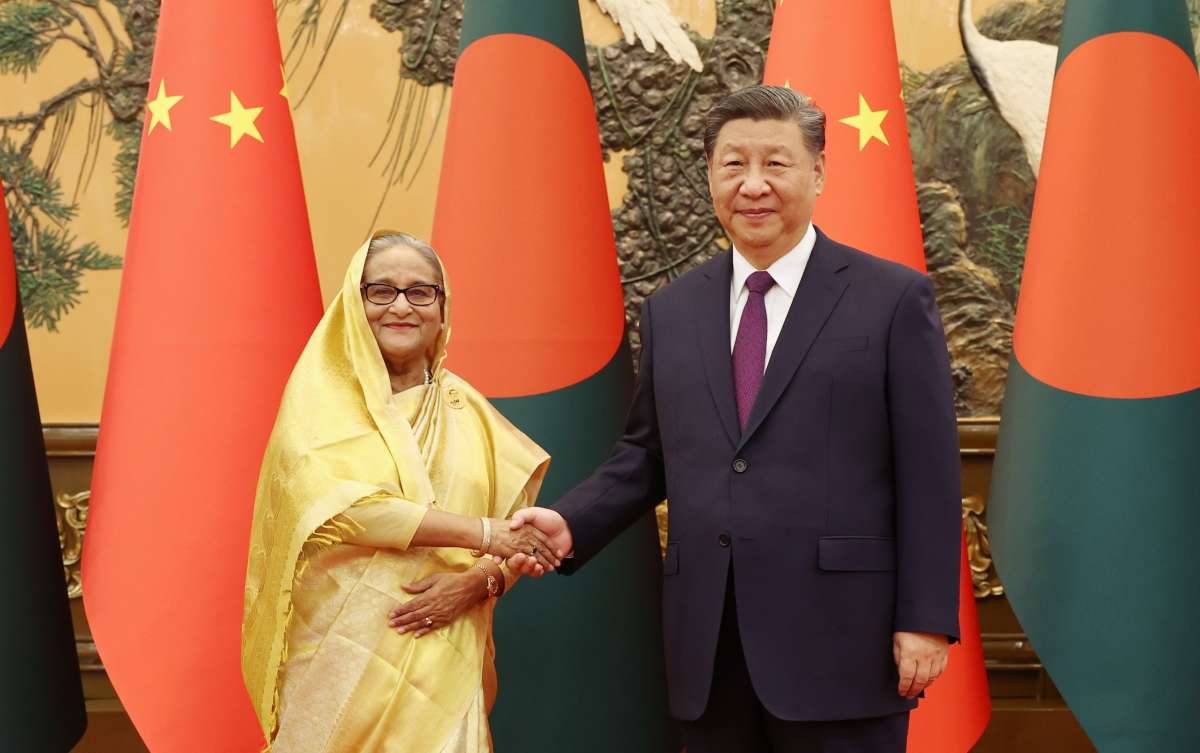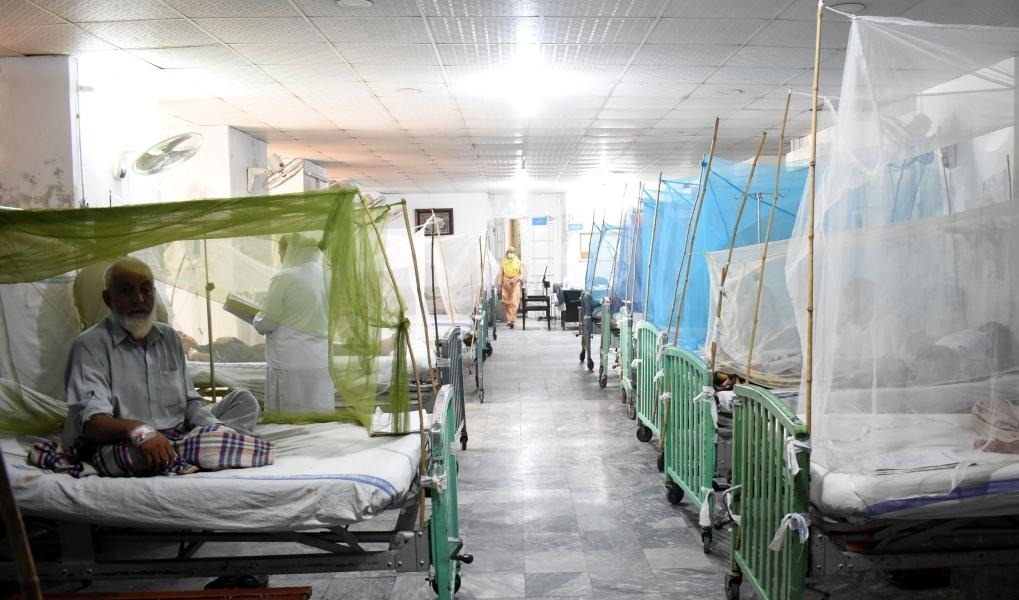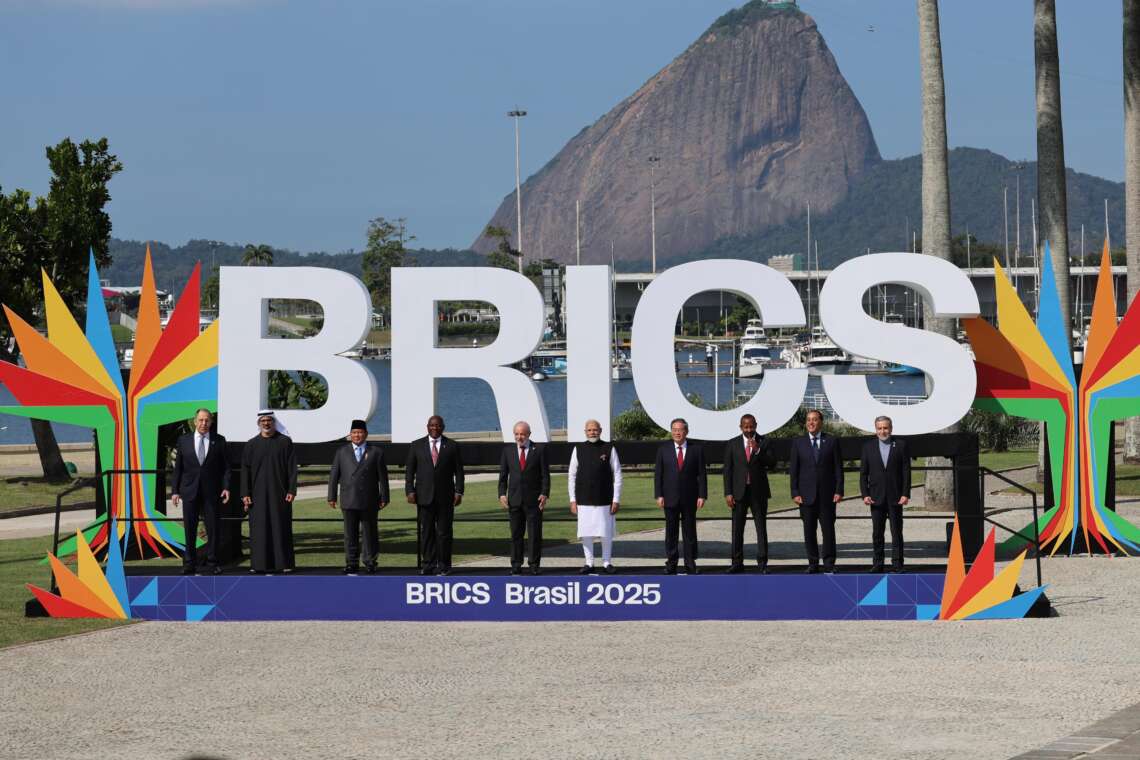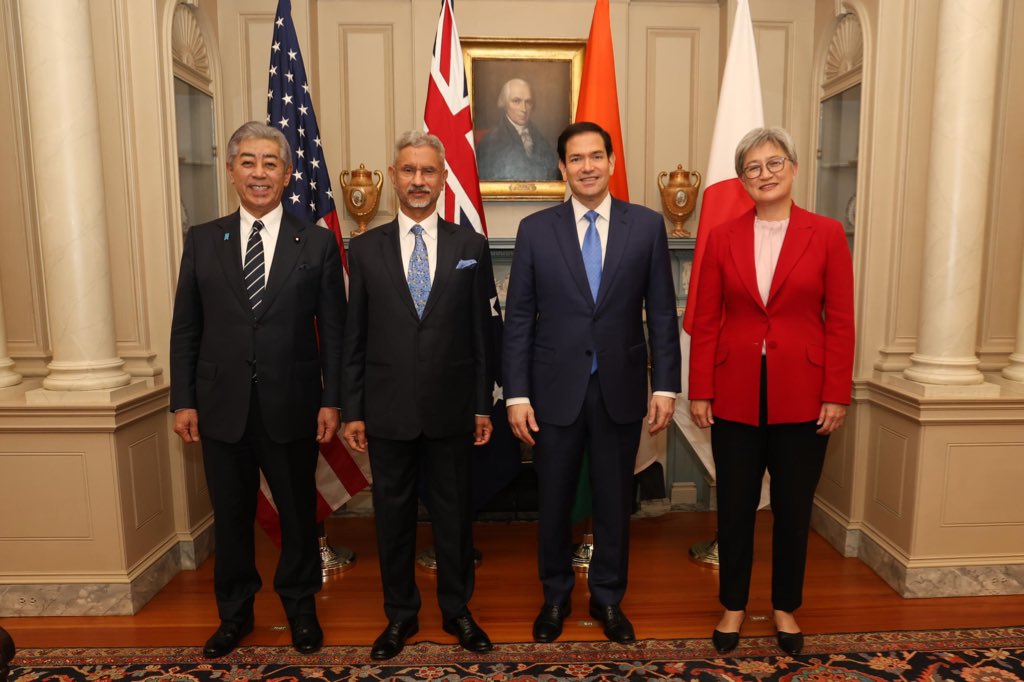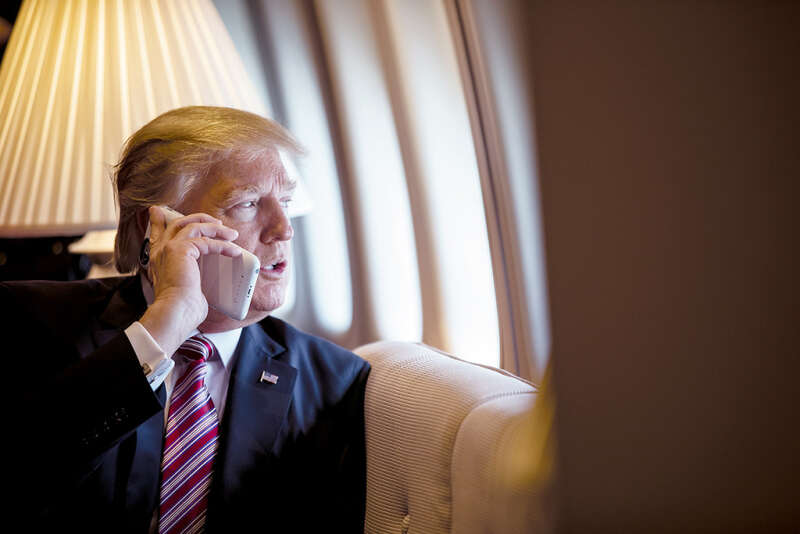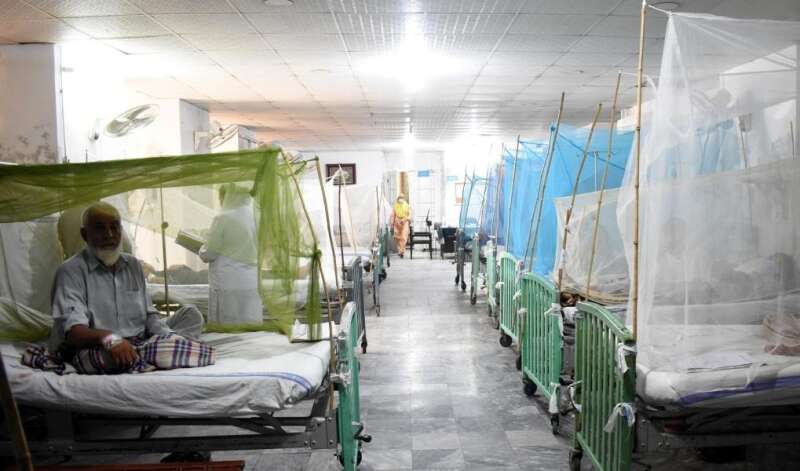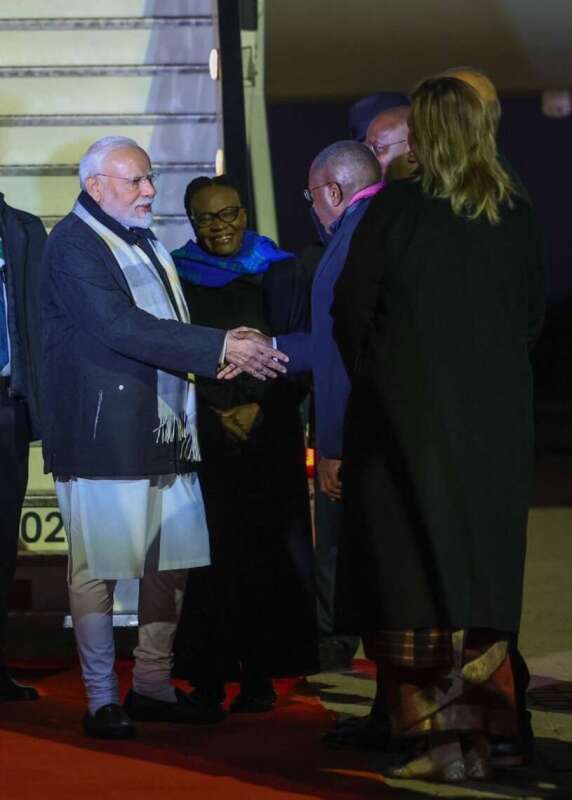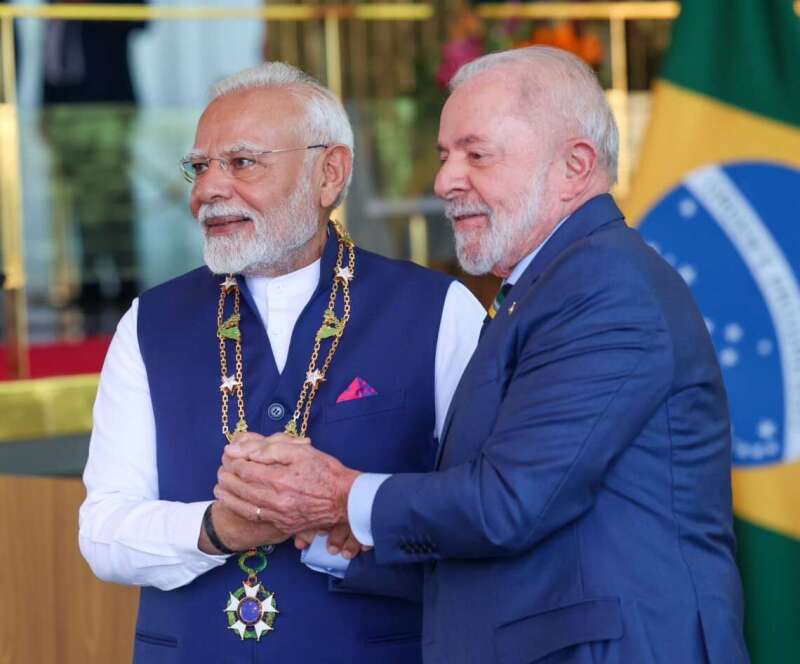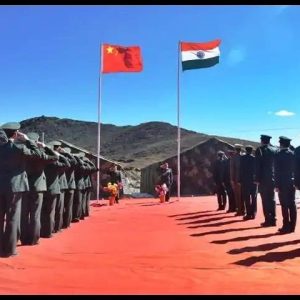Hyped as a visit to secure $5 billion in loans and strengthen ties, PM Hasina’s trip to Beijing ended on a sour note, with her leaving a night early…reports Asian Lite News
One month after visiting India to mark her presence in third-time PM Narendra Modi’s swearing-in ceremony, and within three weeks of becoming the first foreign leader to pay a state visit to India (21-22 June) after the PM’s re-election, Bangladesh PM Sheikh Hasina went on a four-day visit to China.
Hyped as the visit that will bring home at least USD 5 billion in loans for Bangladesh and herald a significant upgrade in the ties between the two countries, the affair seems to have left a sour taste as PM Hasina left Beijing a night earlier than planned.
Although the reason cited was her daughter’s ill health, a closer examination points the finger towards Bangladesh’s disappointment at China’s reception.
First, let us briefly go over the outcomes of this visit. A total of 21 Memorandums of Understanding (MoU) were signed between the two countries and the relationship was elevated from a Strategic Partnership to a Comprehensive Strategic Cooperative Partnership.
These agreements covered a range of domains like infrastructure development, construction of the 6th and 9th friendship bridges between Bangladesh and China, cooperation in disaster management, and so on.
Bilateral talks were held on the expansion of BRI, which Bangladesh joined in 2016, the Rohingya issue and other matters of regional and global geopolitical importance.
A Summit on Trade, Business and Investment Opportunities led to 16 MoUs in sectors such as textiles, solar power, fintech, and electric vehicles, garnering around USD 500 million in Chinese investments into Bangladesh.

China, which has been Bangladesh’s largest trading partner for 13 years and is also its second-largest source of FDI, is heavily involved in the latter’s infrastructure development- contributing to several bridges, highways, power stations and railway projects.
However, the bilateral trade suffers from a massive deficit, with Chinese exports to Bangladesh constituting USD 21 billion, against a measly USD 680 million of Bangladeshi exports to China.
The two countries, during this visit, agreed on a feasibility study for a Free Trade Agreement, which may be tricky grounds for Bangladesh, given this colossal deficit, despite China giving zero-tariff treatment to 98 per cent of Bangladeshi goods.
Despite these seemingly welcome advancements, the Bangladesh PM has fair grounds to believe that the purpose of the whole visit remained unmet. Ahead of the visit, Bangladeshi media reported citing officials involved in preparing the proposals that the country was promised a USD 5 billion credit line by Beijing (which would be offered in yuan), in addition to a USD 15 billion in investment in development projects.
However, China ended up offering just 1 billion yuan, that is, around USD 137 million to Bangladesh.
Moreover, according to an ET report, the visiting PM had to endure diplomatic discourtesy from the Chinese side, as President Xi Jinping, who was expected to hold a lengthy meeting with her, provided her company for only half an hour.
Meanwhile, Chinese PM Li Qiang was left to be her “principal interlocutor”. Even Chinese Foreign Minister Wang Yi did not seek to attend to her, and the state-run media too did not accord respectable space to the visit.
For close observers, it is inferable that Xi Jinping, by undermining PM Hasina’s visit both in optics and substance, is signalling Chinese displeasure, most likely at Hasina’s visible overtures towards India.
As previously mentioned, within a month before her China visit, PM Sheikh Hasina had twice come to India, demonstrating her proactive interest in strengthening bilateral ties with the neighbour. Not only that, Bangladesh Foreign Minister Hasan Mahmud had expressed that they would prefer India’s financial proposal on the Teesta River restoration and management project over China’s as the river flows through India and Bangladesh. This sentiment has been echoed recently by PM Sheikh Hasina. The two neighbouring countries, despite some sticky points, have enjoyed deep cultural, geographical, linguistic, and political relations, since Bangladesh’s independence in 1971, in which India played a vital role.
Bangladesh has frequently called India its ‘political friend’ while China ‘a friend for attaining development’.
In recent times, it has been clear that Bangladesh is trying to balance the regional rivals, milking the benefits of cooperation with both. China has significantly helped Bangladesh, prominently by funding large infrastructural projects such as the Payra Thermal Power Plant, enabling Bangladesh to claim 100 per cent electrification, and the Bangabandhu Sheikh Mujibur Rahman Tunnel under Karnaphuli River.
China has also been accused of trying to create an encirclement or ‘String of Pearls’ around India, through its BRI initiatives, with Bangladesh as a crucial component.
The latest events indicate that China perceives regional geopolitics as a zero-sum game and will not shy away from expressing its objection to Bangladesh’s balancing act.
Due to its declining foreign reserves, Bangladesh is in dire need of assistance, for which it was looking up to China. Going forward, the country will have to assess its approach and devise a way to reduce its economic dependence on China and look towards more reliable partners.


